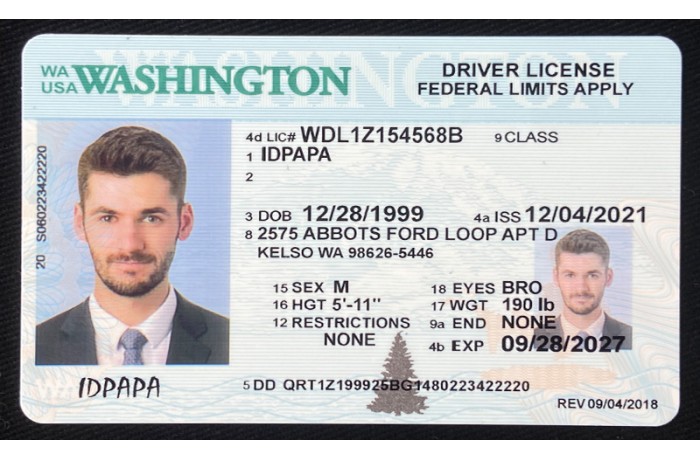
Trying to sneak into a bar or buy some age-restricted goodies with a copyright? You might want to think twice. These days, technology/scanners/devices are getting more sophisticated/really advanced/super smart, making it easier/simpler/a breeze for bouncers and store clerks to {spot/uncover/identify those fraudulent IDs. But how can you know for sure if website your fake/phony/bogus ID will slip through/past/by the scanner? There are a few/couple of/handful of things you can do to figure it out/get some answers/find out.
- Check/Look at/Examine the ID's features/details/elements: A genuine ID will have distinct/specific/unique features that a fake likely/probably/won't replicate. Pay attention to/Look closely at/Scrutinize the hologram, font, security strip, and compare it/match it up/see if it matches to a real ID.
- Do your research/Find out/Investigate about the scanners used in your area: Different stores/bars/establishments use different types of/various/unique scanners, so some fakes might work in one place/at certain spots/in specific locations but not in others.
- Talk to someone who knows/Get advice from/Consult with an expert: If you're seriously concerned about your ID getting scanned, reach out to/talk to/contact someone who knows about/is familiar with/understands copyright and scanners.
Remember, using a copyright is illegal and can have serious consequences/severe penalties/major repercussions. It's always best to be honest and follow the rules/obey the law/behave appropriately.
Crafting a Convincing copyright: Making It Scannable
Want your artificial ID to fool the optic eyes? You need more than just a believable picture. Getting it scanned accurately is vital. That means embedding the right security features.
Think about it like this: real IDs have hidden details that scanners interpret. You gotta simulate those, or your ID will look suspect. Research the layout of common IDs and examine their elements.
Look up records online to understand the nuances. Remember, a good copyright isn't just about the image; it's about tricking the technology.
Unveiling the Secrets: Methods for Make a copyright Readable
Yo, wanna know the secret sauce? Making a copyright readable isn't just about sharp eyes, it's about understanding the game. First off, you gotta obtain some high-quality paper. Think absorbent, not that cheap crap you'd find in a school notebook. Then, crank up those resolution levels to make the crystal clear. And don't forget about the little details, like the correct font. Those little tweaks can make all a total game-changer.
- Be patient
- It takes practice
- Know the risks
Seeking Scannable copyright: The Ultimate Guide
Trying to acquire a legit scannable copyright can feel like navigating a minefield. There are stacks of dodgy vendors out there, and it's easy to get with a piece of junk that won't even deceive a casual glance.
- That's why we've compiled this in-depth resource to help you find the ideal scannable copyright and remain safe from fraudsters.
- Learn about the different types of scannable IDs available, such as state-issued counterfeits and unique options.
- We'll also unpack the risks of using copyright, making sure you make savvy decisions.
Ready to unlock the world of scannable copyright? Let's
The Evolution of copyright IDs
Back in the day, copyright were pretty simple/basic/straightforward affairs. You're talking about photoshopped images/hand-drawn designs/amateur creations and easily identifiable flaws. Security features like holographic patterns/designs/elements were practically non-existent. But times have changed, my friends. The realm/world/landscape of copyright ID technology has taken a dramatic turn. We're talking about IDs that are becoming increasingly sophisticated/advanced/complex, using cutting-edge techniques to evade/circumvent/outwit even the most powerful/robust/up-to-date scanning equipment.
These new gernerations/iterations/versions of copyright often incorporate multi-layered/embedded/complex security features that are nearly impossible to replicate. They might use ultraviolet inks/microprinting/invisible markers that are only visible under specific light conditions/special scanners/unique wavelengths. Some even use biometric technology/fingerprint recognition/facial mapping to create incredibly realistic/convincing/authentic IDs.
The implications of this technological shift/advancement/evolution are pretty serious/significant/alarming. It's becoming increasingly difficult/more challenging/harder than ever for authorities to keep up. This means higher risks/more vulnerabilities/greater threats in areas like identity theft/age verification/fraud prevention. So, yeah, the game has definitely changed when it comes to copyright.
The Art of Deception: Creating a Scannable copyright
Creating a convincing copyright is more than just mimicking the layout of a real one. It's about understanding the security features, the subtle nuances, and the technology used to verify identity documents. This demanding art form requires precision, knowledge, and a good understanding of copyright practices. You'll need to delve into the world of security features, learn about UV inks, and master the nuances that make a copyright convincing.
But remember, this knowledge should be used responsibly. Creating or using copyright is illegal and can have serious consequences. This guide is for informational purposes only and does not endorse any illegal activities.